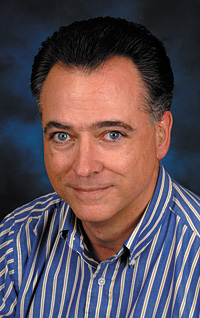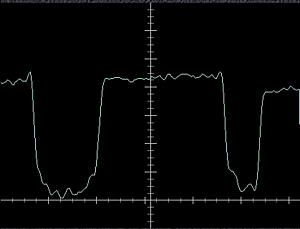'The Planning Is Paying Off'
by David P. Otey, CPBE
"In preparing for battle I have always found that plans are useless, but planning is indispensable." —General (later U. S. President) Dwight D. Eisenhower

David OteyBILLINGS, Mont. I would not presume to equate the 2 GHz BAS re-location pro-cess with the rigors of warfare. Neverthe-less, the above quote is apt. In the roughly six years I have spent directly involved in the process, I have seen plans come and go. Yet, even with all the necessary adjustments for the changing realities "on the ground" (to use the current phrase), the value of good planning reveals itself time and time again.
Case in point: the industry-wide training program Sprint-Nextel is providing to all affected licensees. Originally, a plan was developed to send instructors out on the road with kits of demo equipment. These instructors were to provide on-site training at every affected station in a market, then drive down the road to the next market and do it again. Given the right amount of instructors, gear, and vehicles, with the right logistical coordination, this admittedly ambitious project appeared to be workable—under the best assumptions then available.
But, as relocation progressed, those assumptions were replaced by new ones as better information came back from the field. The near-impossibility of getting all stations in a market ready for training at about the same time—given all the variables in group owners' priorities, individual station requirements, vendor selection, etc.—was what led, ultimately, to a new plan, based on distance learning instead of road shows.
Was the planning that went into the original approach useless? Hardly. Without it, the distance-learning training effort by Azcar Training Systems could never have been launched so quickly after its conception in early 2007. At last count, this effort has reached more than 5,000 employees of more than 350 affected licensees since its inaugural seminar on March 1, 2007. And the pace is picking up.
A second case in point: the uneventful nature of most of the actual cutovers, now completed in an increasing number of large and complex markets. True, some have been delayed temporarily for reasons ranging from equipment issues to major news stories. But when all the planning and preparations were finally completed, and all the stations in a market simultaneously changed to the new channel plan, the event turned out to be anticlimactic. The plan for a given market may have changed so many times that it bore little resemblance to the original, but the planning process bore fruit: Very few post-cutover problems have been reported.

Spectrum display similar to what an ENG control-room operator might see, showing adjacent signals on either side of the desired signal. One appears closer than the other due to the different ways stations may make use of the 12-MHz channels.
IT WORKS
I have spoken to a number of local frequency coordinators in post-cutover markets, and the most frequent comments I have heard range from "ho-hum," "It was a non-event," to "The change has been almost invisible—just the way it was supposed to be." (Some of these volunteer coordinators prefer not to be identified by name or market, so as not to be construed as speaking on behalf of their employers.)
Despite the relatively uneventful nature of the cutover in markets as large and diverse as Houston, central Florida, Phoenix, Las Vegas, Washington, D.C., and Baltimore, some interesting lessons have emerged.
One reported to me by an engineer well-known in frequency coordination circles, has to do with pool feeds. The stations in this market were well prepared for the cutover, even to the point of having decided on default transmitting parameters for digital ENG pool feeds. Then the unanticipated question arose: should the pool video format be 4:3 or 16:9? Not every station was at the same point in the migration toward HD news production. While perhaps not an earth-shattering question, this one was still, to use the engineering term, "non-trivial." And it is one that other markets might do well to consider before the need arises.
RELATIVELY MINOR ADJUSTMENTS
The instructors at Azcar Training Systems find themselves benefiting from post-cutover feedback as well. For example, in one market most stations operate their digital ENG links using an 8-MHz occupied bandwidth, centered in a 12-MHz channel. Through Azcar's training and their own experience, operators quickly learn to recognize the usual appearance of these signals on their spectrum monitors (a new tool to most of them). But not every station operates this way, prompting some technicians to ask, "Why is the adjacent signal on one side so much closer to me than the one on the other side?"
The answer—that one station is fully occupying a 12-MHz channel by the use of two, offset 6-MHz signals—may be generally understood by experienced RF engineers. That doesn't make the asymmetry of the monitor display any less puzzling to an operator who still misses the days of tuning in a shot by simply looking at the picture monitor. Now that Azcar's instructors have been made aware of this real-world experience, they can address it explicitly in training.
But these are relatively minor adjustments—at best tactical, not strategic. The single most important lesson coming back from the field seems to be: the planning is paying off. Narrowing in place, followed by a simultaneous, marketwide cutover, really does work. Evidence for its success is coming from more and more big markets. We can look forward to the day when every relocated 2 GHz user looks back at the cutover and says, "ho-hum."
The professional video industry's #1 source for news, trends and product and tech information. Sign up below.
